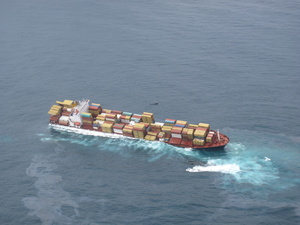The 2010 HNS Convention

The transport of hazardous and noxious substances (HNS) by sea is a vital trade. Chemicals and other products underpin many manufacturing processes and thanks to IMO regulations, they are transported safely. However, incidents do happen and, when they do, victims need to be adequately and efficiently compensated. Despite this, currently there is no comprehensive and international regime in force as the International Convention on Liability and Compensation for Damage in Connection with the Carriage of Hazardous and Noxious Substances by Sea, 1996 was never ratified by sufficient number of States.
In April 2010, an international conference on the revision of the HNS Convention adopted the Protocol of 2010 to the HNS Convention (2010 HNS Protocol), that was designed to address practical problems that had prevented many States from ratifying the original Convention.
Given the IOPC Funds’ long experience in managing the oil pollution compensation system and, as requested by the International Conference that adopted the Protocol, the IOPC Funds’ Secretariat has been tasked with assisting the IMO Secretariat in setting up the HNS Fund and with making preparations for the first session of the HNS Assembly.
Slovakia became the eighth State to ratify or accede to the 2010 HNS Protocol in November 2023. It joins Canada, Denmark, Estonia, France, Norway, South Africa and Tϋrkiye, who have already deposited instruments of ratification to the Protocol and who are leading the way towards entry into force of the 2010 HNS Convention.
Canada, Denmark, Estonia, France, Norway, South Africa, Slovakia, and Tϋrkiye are the first States to have consented to be bound by the Convention. There has, however, been significant progress reported by a number of other States in recent months and it is anticipated that a number of those States will ratify in the near future.
The IOPC Funds continues to work together with the IMO Secretariat to assist States’ ratification of or accession to the Protocol in order to facilitate the entry into force of the 2010 HNS Convention as soon as possible.
Reporting guidelines and model reporting forms for providing data on the total quantities of contributing cargo received in a State have been adopted and published. In addition, an online database (the HNS Finder) of HNS substances that fall within the definition of contributing cargo under the 2010 HNS Protocol has been developed and made available. Importantly, engagement with States considering ratifying the Protocol and the industry stakeholders potentially affected by the Convention has continued through workshops and other means and a number of tools have been specifically developed to create awareness about the Convention internally and to assist them with their implementation efforts, such as the HNS incidents scenarios presentation which is readily available on the HNS Convention website.
The most recent activities undertaken to assist with the ratification of the Protocol as well as general information on the HNS Convention and the 2010 HNS Protocol is available at: www.hnsconvention.org. This website, managed and maintained by the IOPC Funds, is home to the HNS Finder as well as to a moderated blog section, allowing States and other interested stakeholders to ask questions and share information.
 Our Use Of Cookies
Our Use Of Cookies